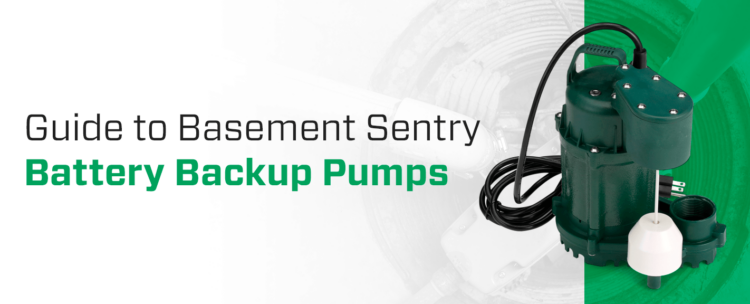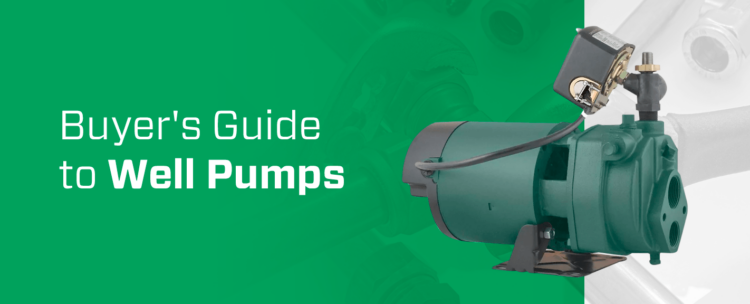
Sump pumps protect basements from water damage and are a crucial part of household drainage systems. An old or worn sump pump cannot operate efficiently, leaving your basement vulnerable to potential damage. You may need to replace your sump pump when it reaches its expected life span or becomes damaged. Replacing a worn, damaged or inadequate pump can keep your basement safe from water damage in the event of a storm or heavy rain. Learn more about when you should consider replacing your home’s sump pump.
How Does a Sump Pump Work?
A sump pump sits in or above a pit that collects water. Water moves from drainage tiles to the sump pit via gravity until the pit reaches its capacity. Once the pit fills with water, the water lifts the pump’s float switch to activate the pump. The sump pump then uses an impeller to push the water through a discharge pipe to an outdoor area away from your house.
As the pump’s impeller pushes the water out of the pit, it collects more water to fill the void and continues to push it through the discharge pipe. The pipe contains a check valve that stops water from flowing back into the pit so that all water flows away from the building.
When Should You Replace Your Sump Pump?
Understanding when to replace your pump can save you time and money. Sump pumps protect your basement from water damage, and replacing a pump at the right time can keep your basement safe by providing new protection before your current system fails.
Replacing your pump when it is no longer effective ensures you protect your basement from water damage, so it’s important to look for signs that you need a new pump. It may be time to replace your sump pump if you notice and signs of wear or damage or if your home needs an upgrade.
Signs of Wear or Damage
Sump pumps wear over time, and they can become damaged. Signs of wear or damage can indicate when a replacement pump is necessary. You may need to replace your sump pump if you notice the following signs:
- Failure to operate: If your pump fails to activate when the pit fills with water, the sensor or the pump itself could be damaged. If the pump’s power source works but the pump does not, the pump may be burnt out or clogged.
- Continuous operation: A sump pump that operates continuously or when it is not needed is another sign you may need to replace your current pump.
- Excessive noise: It may be time for a pump replacement if you notice your current pump making excessive noise. If it is louder than usual, your pump may have a broken part or an imbalanced impeller. An imbalanced impeller can become damaged over time, and a damaged impeller can draw more debris into the pump.
- Excess moisture or unpleasant odors in the basement: If your basement feels more damp than usual or you notice mold growth, your pump might not operate properly. Moldy or rotten smells in your basement can indicate that your basement is collecting moisture.
- Water that’s not discharging: Another sign you may need to replace your pump is if the pump activates without discharging water.
- Rust: Some older pumps do not contain rust-resistant parts. Replace a pump with rusted parts.

When You May Need an Upgrade
If your sump pump operates properly but you still find signs of moisture or water damage in your basement, you may need to upgrade your sump pump. A sump pump’s horsepower determines its ability to remove water. If your basement takes in more water than your pump can handle, the system can become overwhelmed. Upgrading to a more powerful pump enables your system to remove water effectively, even during heavy rainfall and storms.
A pump with 1/3 horsepower can adequately remove water in most homes and situations. However, some households experience more water intake and require a more powerful solution, such as a 1/2 horsepower or a 3/4 horsepower pump. Your home may need a 3/4 horsepower pump if the following factors apply:
- Your house is in a low-lying area or a floodplain.
- Your home has a deep basement.
- You live in an area with high water tables that is prone to flooding.
- Water needs to discharge through horizontal pipes extending over 10 feet.
It’s also important to consider a sump pump’s size. A home’s required pump size depends on factors such as basement depth, groundwater depth and a sump’s drainage area. If your pump cannot keep up with incoming water, you may need to upgrade to a larger pump.
Are There Different Types of Sump Pumps?
A primary sump pump is a home’s main operating pump, and a backup pump serves as additional protection. The different types of primary sump pumps are pedestal pumps and submersible pumps.
- Pedestal pumps: Pedestal pumps sit above the sump pit, making them less vulnerable to water damage. A long tube holds a pedestal pump’s motor above the sump pit, and the float switch extends into the pit. Pedestal sump pumps are suitable for smaller sump pits.
- Submersible pumps: Submersible sump pumps sit inside a sump pit. A submersible sump’s motor and pump body are both submerged in the water when the pit fills, which prevents overheating and helps the pump operate longer.
How Long Does a Sump Pump Last?

A sump pump’s life expectancy is typically seven to 10 years if it is well-maintained. A pump can fail earlier if it is neglected or too small to handle a household’s water intake. It’s essential to monitor your sump pump, especially if you have had it for more than seven years. After this time, you may need to consider replacing it.
Protect Your Home With a Reliable Sump Pump From Zoeller at Home

A sump pump protects your home from water damage, making it an essential part of your drainage system. Replacing your sump pump when it becomes old or damaged provides peace of mind that your basement is protected. Sump pumps can last up to 10 years, but you should watch for signs that your pump may need to be replaced or upgraded. Periodically checking both your pump and your basement can help you remain aware of your pump’s state and take action when you need to.
Zoeller at Home manufactures high-quality residential sump pumps to offer homeowners reliable solutions. Our pumps are made with premier materials and undergo rigorous testing to provide dependable protection. Locate a retailer near you to purchase a reliable sump pump for your home.



